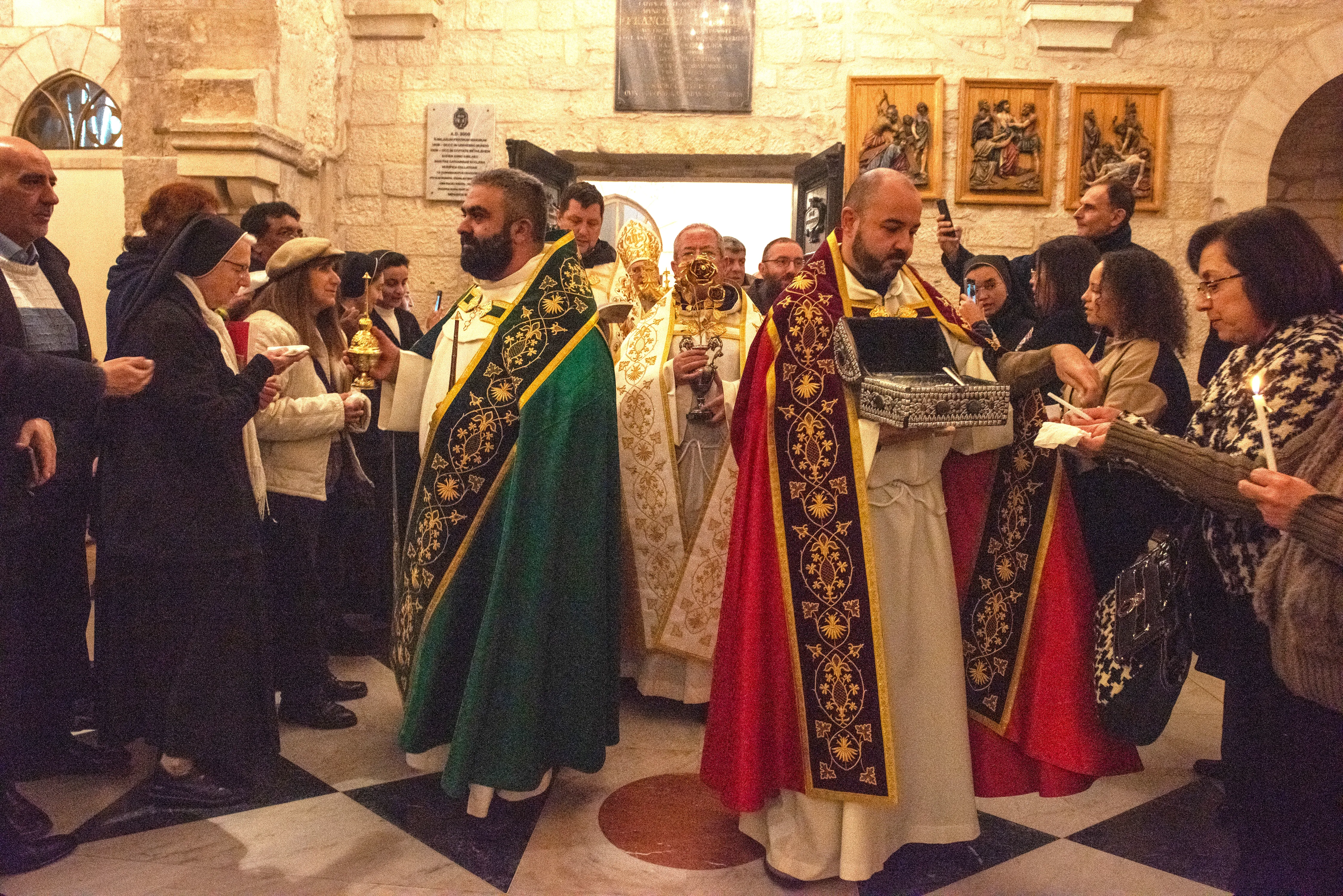The ‘Magi’ Reach Bethlehem, Finding Smaller Crowd of Faithful Amid Ongoing War
The afternoon celebration on Jan. 6 brought together a small crowd of believers, young and old, in the Latin Church of St. Catherine, part of the complex of the Basilica of the Nativity.

Magi reenactors arrived in Bethlehem this year bearing their gifts, as the faithful held out their hands for grains of incense and drops of myrrh in the annual reenactment of the Epiphany by the Franciscan friars of the Custody of the Holy Land.
The afternoon celebration on Jan. 6 brought together a small crowd of believers, young and old, in the Latin Church of St. Catherine, part of the complex of the Basilica of the Nativity.
The Magi made their appearance for the recitation of the Second Vespers of the Epiphany, marking the conclusion of the solemnity and also the end of the Christmas celebrations in Bethlehem.
After the prayer, the friars, the Magi reenactors and the custos of the Holy Land, Father Francesco Patton, who presided over the prayer, descended into the Grotto of the Nativity, bringing gold, incense and myrrh to the sacred place of Jesus’ manifestation.
The gold was in the form of the rose donated by Paul VI to the Basilica of the Nativity, carried as a tradition by the guardian of the Franciscan convent in Bethlehem, currently Father Luis Enrique Segovia. The secretary of the Custody of the Holy Land, Father Alberto Pari, and the priest responsible for the friars’ infirmary, Father Jad Sara, carried the gifts of incense and myrrh, which they then distributed to the gathered faithful in the church and the cloister.
This usually crowded event has been affected by the absence of pilgrims, as was the solemn entrance that took place on the morning of Jan. 5. For the second time in a month, the custos of the Holy Land found himself walking through deserted streets. Local Christians had completely boycotted the “street” events commemorating the feast amid the Israel-Hamas war.
The custos acknowledged the absence of pilgrims and said the time was ripe for their return.
“Seeing that the Magi, that is, the pilgrims in Bethlehem, are missing, I invite all those who wish to come on pilgrimage to make an effort and come anyway. The holy places are open for visits! People need the encounter with pilgrims! We pray, hope, and insist that pilgrims return, so that there may be peace!” he said in an interview with the Christian Media Center.
Peace is the word that has marked not only the past months but especially the day of Epiphany, exactly 60 years after Paul VI’s visit to the Holy Land and the celebration in the Grotto of the Nativity. The custos of the Holy Land, who presided over the solemn Mass in the morning, wore the same chasuble as Paul VI and used the same chalice: a sign of continuity with the message of that Pope and his appeal for peace, addressed to heads of state and political and religious leaders.
Father Patton said, “We feel the urgent duty to renew … our urgent appeal for world peace. May those in power hear this cry from our hearts and continue generously their efforts to ensure humanity the peace it so ardently aspires to; so that the world can at all costs avoid the anguish and torments of a new world war, the consequences of which would be incalculable.”


















